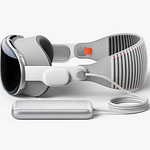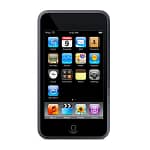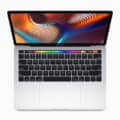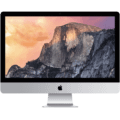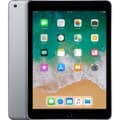- All Apple Devices
- iPod
- Apple iPod Touch 4th Generation
Apple iPod Touch 4th Generation
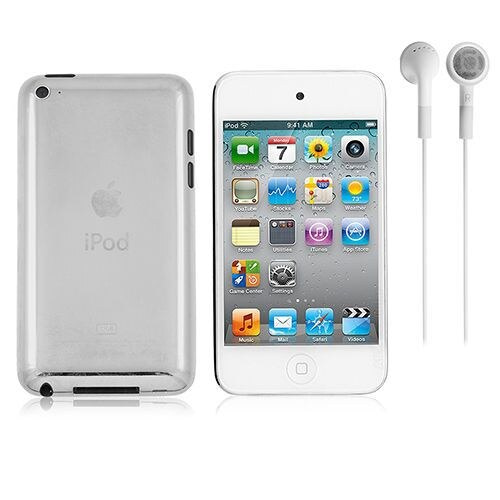
iPod Touch 4th Generation
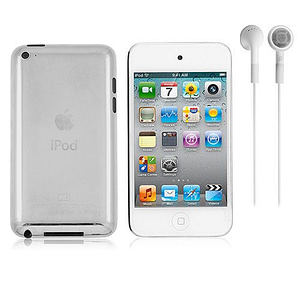
Product Brand: Apple
3
Pros
- Good sound quality
- Decent battery life
- Easy to use interface
- Affordable price (at the time of release)
Cons
- No cellular connectivity
- Outdated hardware and software
- Low-quality camera
- No water resistance
Apple iPod Touch 4th Generation Review and Features
The fourth generation iPod Touch (marketed as “the new iPod touch” and colloquially known as the iPod Touch 4G, iPod Touch 4, or iPod 4) is a multi-touch mobile device designed and marketed by Apple Inc. with a touchscreen-based user interface.
The successor to the 3rd-generation iPod Touch was unveiled at Apple’s media event on September 1, 2010, and released on September 12, 2010. It is (officially) compatible with up to iOS 6.1.6, which was released on February 21, 2014.
The fourth-generation iPod Touch was the first iPod to offer front and rear-facing cameras. It is a slimmer, lighter model than its predecessors and the iPhone 4 and introduces a Retina Display. Other improvements include support for recording 720p video via the rear camera, Apple’s A4 chip (the same chip used in the iPad (1st generation) and iPhone 4).
It is available in two colours: black and white. The device continues the same more-than-a-player but less-than-a-phone line. It was released in pair with the iPhone 4 and shares an Apple A4 chip, a 3.5″ “Retina” screen (960 x 640, 326 PPI, not IPS) and an integrated camera for making video calls via FaceTime.
It lacks a 3G/EDGE module, A-GPS, and digital compass. The iPod touch 4th gen supports features like iCloud, iMessage, and iMovie editing.
As to hardware, the device has a 3-axis gyroscope, an in-built speaker and mike, and a front VGA camera for video calls. The rear 0.70-megapixel camera with no flash is capable of recording 720p video.
The battery life was enhanced by up to 40 hours of music playback and 7 hours of video playback. The iPod touch 4th generation is available in three capacities: 8, 32 and 64 GB.
Full Technical Specifications
General Technical Specifications
| Device Type | Portable Media Player |
| Announced | 01 September, 2010 |
| Released | 08 September, 2010 |
| Status | Discontinued |
| Predecessor | 3rd-generation iPod Touch |
| Successor | iPod Touch (5th generation) |
| Generation | 4th |
| Colors | Black |
| System Requirements |
Apple ID (required for some features) Internet access Syncing with iTunes on a Mac or PC requires: Mac: OS X v10.5.8 or later PC: Windows 7; Windows Vista; or Windows XP Home or Professional with Service Pack 3 or later iTunes 10.5 or later |
| Input and Output |
30-pin dock connector 3.5-mm stereo headphone minijack Built-in speaker Microphone |
| iPod's Processor Type | ARM Cortex-A8 Apple A4 |
| iPod's Processor Speed | 800 Mhz |
| RAM | 256 MB |
| GPU GPU (Graphics Processing Unit) is a single-chip processor designed to rapidly manipulate and alter memory to accelerate the creation of images in a frame buffer intended for output to a display, This includes things such as lighting effects, object transformations, and 3D motion. | PowerVR SGX535 GPU |
| iPod's Internal Memory | 8, 16, 32 or 64 GB flash memory |
| Connectivity | USB, Wi-Fi 802.11b/g. Bluetooth: 2.1+EDR |
| FM Radio Support | No |
| Operating System OS => Every computer system run on a base software called Operating System (OS). Operating System controls all basic operations of the computer (such as smartphone, PDAs, tablet computers and other handheld devices). The Operating System allows the user to install and run third party applications (apps), apps are used to add new functionality to the device. | iOS 5.0. Max. OS upgrade: iOS 6.1.6) |
| Audio Technology Features |
Video recording, HD (720p) up to 30 frames per second with audio; still photos (960 by 720) with back camera VGA-quality photos and video up to 30 frames per second with front camera Tap to control exposure for video or stills Photo and video geotagging over Wi-Fi Audio Frequency response: 20Hz to 20,000Hz Audio formats supported: AAC (8 to 320 Kbps), Protected AAC (from iTunes Store), HE-AAC, MP3 (8 to 320 Kbps), MP3 VBR, Audible (formats 2, 3, 4, Audible Enhanced Audio, AAX, and AAX+), Apple Lossless, AIFF, and WAV User-configurable maximum volume limit TV and Video H.264 video up to 720p, 30 frames per second, Main Profile level 3.1 with AAC-LC audio up to 160 Kbps, 48kHz, stereo audio in .m4v, .mp4, and .mov file formats MPEG-4 video up to 2.5 Mbps, 640 by 480 pixels, 30 frames per second, Simple Profile with AAC-LC audio up to 160 Kbps per channel, 48kHz, stereo audio in .m4v, .mp4, and .mov file formats Motion JPEG (M-JPEG) up to 35 Mbps, 1280 by 720 pixels, 30 frames per second, audio in ulaw, PCM stereo audio in .avi file format Support for 1024 by 768 pixels with Apple VGA Adapter; 576p and 480p with Apple Component AV Cable; 576i and 480i with Apple Composite AV Cable (cables sold separately) Headphones Earphones Frequency response: 20Hz to 20,000Hz Impedance: 32 ohms |
| Headphone Type | 3.5mm Audio jack |
| Display Info |
3.5-inch (diagonal) widescreen Multi-Touch display 960-by-640-pixel resolution at 326 pixels per inch |
| Dimensions |
Height: 4.4 inch (111.0 mm) Width: 2.32 inch (58.9 mm) Depth: 0.28 inch (7.2 mm) |
| Weight | 3.56 ounces (101 grams) |
| Camera | No |
| Sensors Sensors are electronic components that detects and responds to some type of input from the physical environment. The specific input could be light, heat, motion, moisture, pressure and location, The output is generally a signal that is converted to use in computing systems, a location sensor, such as a GPS receiver is able to detect current location of your electronic device. |
Three-axis gyro Accelerometer Ambient light sensor |
| SIM SIM (Subscriber Identity Module) is a small card that contains mobile network subscriber's account information. This allows the phone using the card to attach to a mobile network. The SIM card is most commonly associated with GSM and UMTS mobile networks. Moving a SIM card from one phone to another allows a subscriber to switch mobile phones without having to contact their mobile network carrier. SIM cards can also be used by a phone to store limited amounts of data, such as phone numbers and text messages. | No SIM |
| Battery |
Built-in rechargeable lithium-ion battery Music playback time: Up to 40 hours when fully charged Video playback time: Up to 7 hours when fully charged Charging times: Fast charge in about 2 hours (80% capacity), full charge in about 4 hours |
| Navigation | Multitouch screen |
Disclaimer Note
We can not guarantee that the information on this page is 101% correct.

